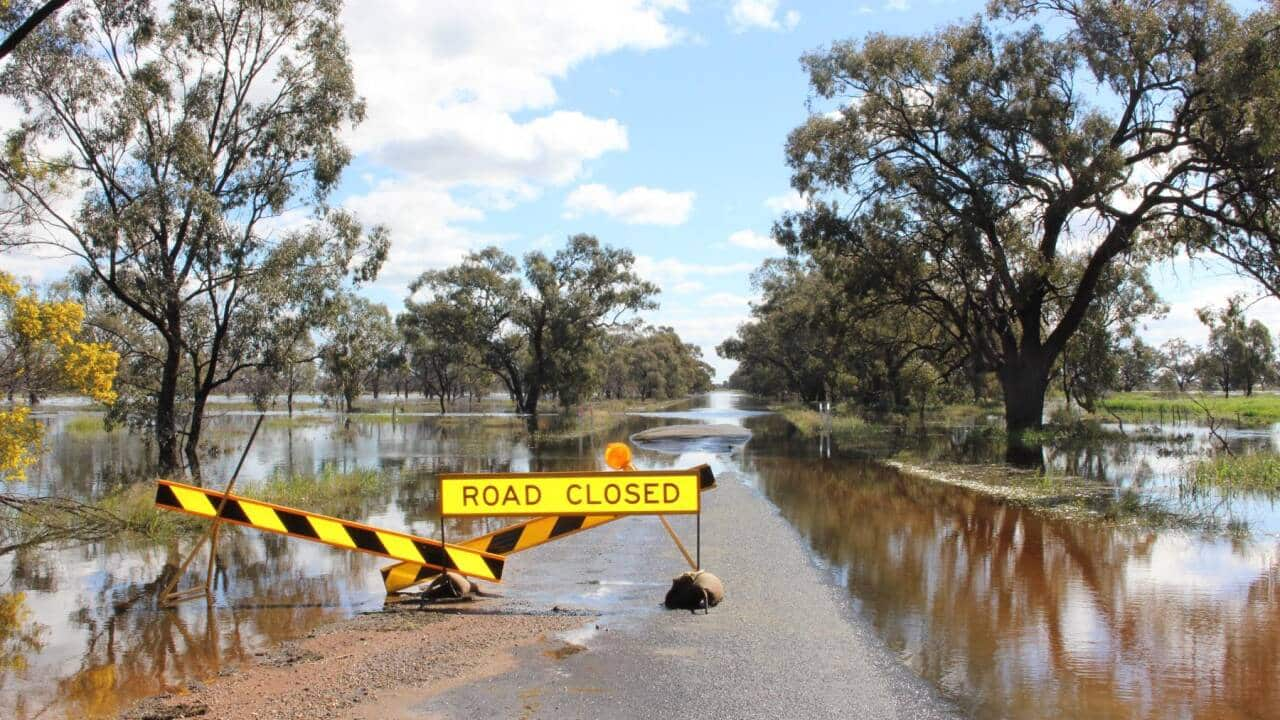After three major floods that destroyed crops and machinery this year and another wet summer predicted, the owners of in Sydney’s west say they are “just trying to be positive”.
The Bureau of Meteorology on 13 September declared a La Niña event was underway in the Pacific Ocean and eastern Australia should prepare for above-average rainfall over spring and early summer.
This prediction was an ominous sign for Christina Kelman, operations manager at the organic farm located in Wallacia, after extensive flooding damage between March and April.
“We were affected three times [this year] - there was a period in between the two major floods, where there was a significant amount of rain, and the water still hadn't receded completely. And so we lost more again,” she said.
The loss of much of Rita’s Farm’s winter crop was “quite depressing”, Ms Kelman said, after 60-70 per cent of the farm went underwater in April.
“A lot of our crops are leafy greens. Baby spinach, all gone. Baby rocket, all gone, all the herbs were gone instantly. If they're not totally ripped out of the soil, they’ve been underwater for that time,” she said.
Ms Kelman said that after being underwater, the crops developed mould and/or spotting and discolouration which made them unmarketable.
Between a dam and a river
Ms Kelman’s mother Rita, who migrated to Australia from Shenzhen in southern China’s Guangdong province, started the farm in 2005 with just a few boxes of fresh vegetables and herbs which she sold at a local market.
Rita initially worked for local councils as a Chinese interpreter for Chinese-speaking market gardeners near Badgerys Creek, teaching growers how to properly spray pesticides.
They taught her how to farm and Rita then explored organic growing, which has flourished on her farm since then. Now, Rita’s Farm sells fruit and vegetables at markets all around Sydney, Wollongong and even Canberra, also offering delivery.

Christina Kelman (left) with her mother Rita, who started Rita's Farm. Source: Supplied / Rita's Farm
She explained that as the main farm is situated on Bents Basin Road parallel to the Nepean River, it was prone to flooding after heavier rainfall.
“The dam [Warragamba Dam] is behind us and the river [Nepean River] is in front of us,” she said.
And it wasn’t just the loss of crops or machinery that was stressful, but also how her father and brother were caught in rising floodwaters in April, she said.

Access to some parts of Rita's Farm was blocked as floodwaters began to rise. Source: Supplied / Rita's Farm
“[At our farm], when it floods, you have to move all the equipment from the lower areas and move it all the way to the top … not just like vehicles, it's pumps and like computer systems and things like that.
“And so they actually ended up getting caught down there because it was just raining and then all of a sudden [the water] went from not touching the ground to like my dad having to be pulled out of the shed in a boat.
“It happened just so quickly … it was hectic.”
The continued loss and flood recovery have taken a toll on her parents, Ms Kelman said.
“It's just [about] trying to be positive," she said.
“I think they're tired ... we're still working, we're still planting. But in terms of going all out ... it's very much just like we just do what we do."
Planning for more flooding
Now that it’s spring, Rita’s Farm has decided not to plant in the lower part of the farm as even the slightest flood could destroy those crops.
“So we just said, ‘Okay, we won't, we won't bother with that.’ Because it's [almost] not worth it,” Ms Kelman said.
Instead, it was about trying to plan for heavier rainfall that could bring flooding back to the farm.
“I think we've learned a little bit from the first couple of times [of flooding], like how long it took us to recover from the first couple of floods. And we sort of said ‘well, right, we want to recover quicker’,” she said.
“When you live in a flood zone, you have to be aware that you're going to flood … we've had floods - this is not the first year to have floods, I think the last three, four years we've had a flood.
“So you know, it is going to flood so that’s not an anomaly. It's just an anomaly this year, because it was too many at the same time."

